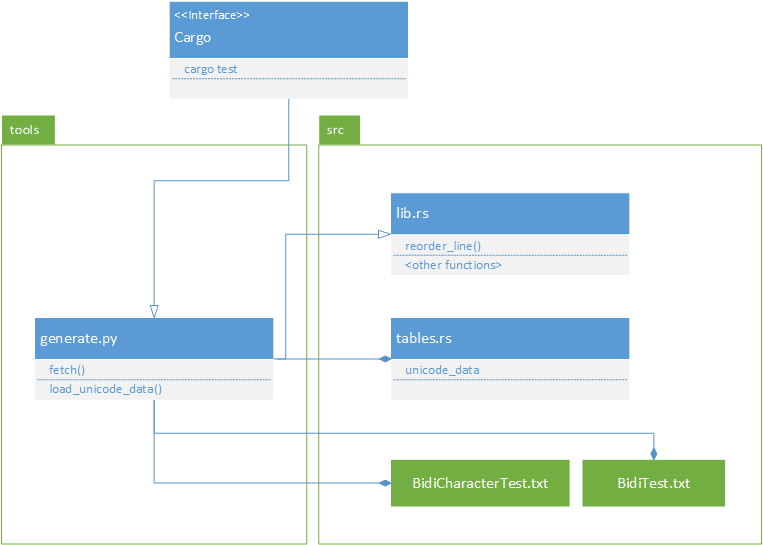CSC/ECE 517 Fall 2015 M1505 Add conformance tests to unicode-bidi and fix conformance bugs: Difference between revisions
(→Servo) |
|||
| Line 19: | Line 19: | ||
==Design Principles== | ==Design Principles== | ||
Two of our proposed design principles are: | Two of our proposed [http://www.oodesign.com/design-principles.html design principles] are: | ||
1. Open-Closed principle: | 1. Open-Closed principle: | ||
Revision as of 01:02, 10 November 2015
Introduction
Servo
Servo is an experimental project to build a Web browser engine for a new generation of hardware: mobile devices, multi-core processors and high-performance GPUs. With Servo, we are rethinking the browser at every level of the technology stack — from input parsing to page layout to graphics rendering — to optimize for power efficiency and maximum parallelism. Servo builds on top of Rust to provide a secure and reliable foundation. Memory safety at the core of the platform ensures a high degree of assurance in the browser’s trusted computing base. Rust’s lightweight task mechanism also promises to allow fine-grained isolation between browser components, such as tabs and extensions, without the need for expensive runtime protection schemes, like operating system process isolation.
Rust
Rust is a new programming language for developing reliable and efficient systems. It is designed to support concurrency and parallelism in building platforms that take full advantage of modern hardware. Its static type system is safe and expressive and it provides strong guarantees about isolation, concurrency execution and memory safety. Rust combines powerful and flexible modern programming constructs with a clear performance model to make program efficiency predictable and manageable. One important way it achieves this is by allowing fine-grained control over memory allocation through contiguous records and stack allocation. This control is balanced with the absolute requirement of safety: Rust’s type system and runtime guarantee the absence of data races, buffer overflow, stack overflow or access to uninitialized or deallocated memory.
Architecture
Project Description
Project Implementation Flowchart
Here is a flowchart which represents the sequence of activities that make up the logical flow of this project
Design Principles
Two of our proposed design principles are:
1. Open-Closed principle:
We will be adding code to generate.py to convert the test cases in BidiTest.txt and BidiCharacterTest.txt into Rust test cases. However, we won't be changing exisiting code in the generate.py file.
2. Single Responsibility Principle:
The code to be implemented in generate.py and lib.rs will contain seperate single responsibilities. generate.py deals will fetching files, loading, unloading data. Whereas, lib.rs deals with actually testing the exisiting methods, and extending the functionality of the Unicode-Bidi algorithm.
Design Pattern
UML Diagrams
Class Diagram
Here is a class diagram representing the different classes involved and their mutual interaction.
Test Cases
The project involved adding code from BidiCharacterTest.txt and BidiTest.txt so as to ensure that the implementation of the unicode-bidi algorithm always conforms to the specifications defined in the Unicode Bidirectional algorithm. However as part of the initial steps, we did add a few manual test cases that would check for conformance to some of the major steps. Here are some of those test cases:
- Check for LTR by passing the level number
- Check for RTL by passing the level number
- Check for removal of characters according to the Rule X9 of the algorithm
- Check for non removal of characters according to the Rule X9 of the algorithm
- Check for reordering of characters in accordance with the following types of characters:
- Weak LTR
- Strong LTR
- Strong RTL
- Neutral characters
- RTL(Explicit Right-To-Left) Markers (Failing Test Case. The steps to implement this was not implemented till that point in time.)
Video
<TBA>
References
http://www.oodesign.com/design-principles.html https://en.wikipedia.org/wiki/Command_pattern

